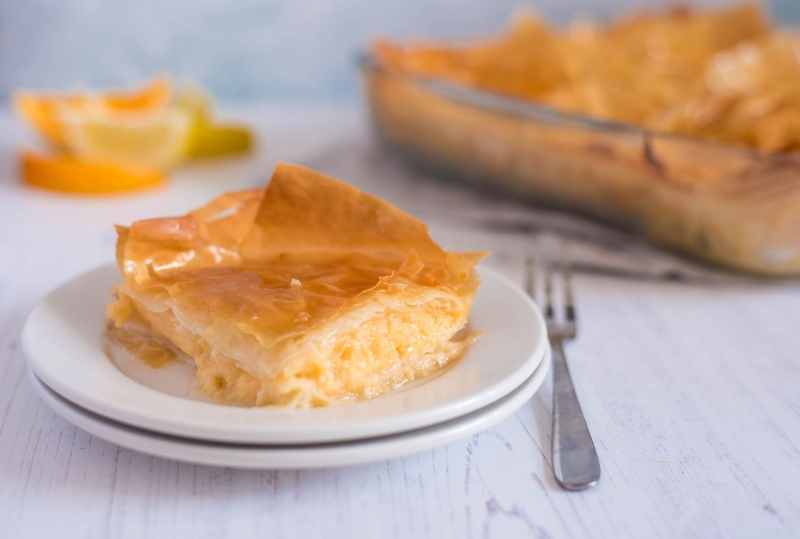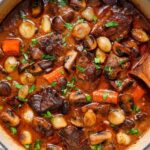Prep: 45 mins
Cook: 45 mins
Total: 90 mins
Servings: 24 servings
Yield: 1 pie
This custard pie is a favorite Greek dessert. If you can get past the tongue twister name, Galaktoboureko (gah-lahk-toh-BOO-reh-koh) can easily become your favorite Greek pastry as well. It’s a divine combination of creamy custard and flaky phyllo dough that is baked to golden perfection and then drenched with a lemon and orange infused syrup.
The only caveat is that this dessert is best served the same day it is made. Once refrigerated, the custard tends to harden and loses its lovely texture. So make sure to leave time to prepare, bake, and enjoy the same day.
Ingredients
For the Custard:
-
6 cups milk
-
1 1/4 cups fine semolina, or farina
-
6 large egg yolks
-
1/2 cup sugar
-
1 tablespoon pure vanilla extract
-
2 tablespoons unsalted butter
For the Galaktoboureko:
-
1 pound phyllo pastry sheets
-
1 cup (8 ounces) unsalted butter, melted, for brushing phyllo
For the Syrup:
-
1 cup sugar
-
1 cup water
-
1 (2-inch piece) lemon rind
-
1 (2-inch piece) orange rind
-
1/2 lemon, juiced
Steps to Make It
Make the Custard
-
Gather the ingredients.
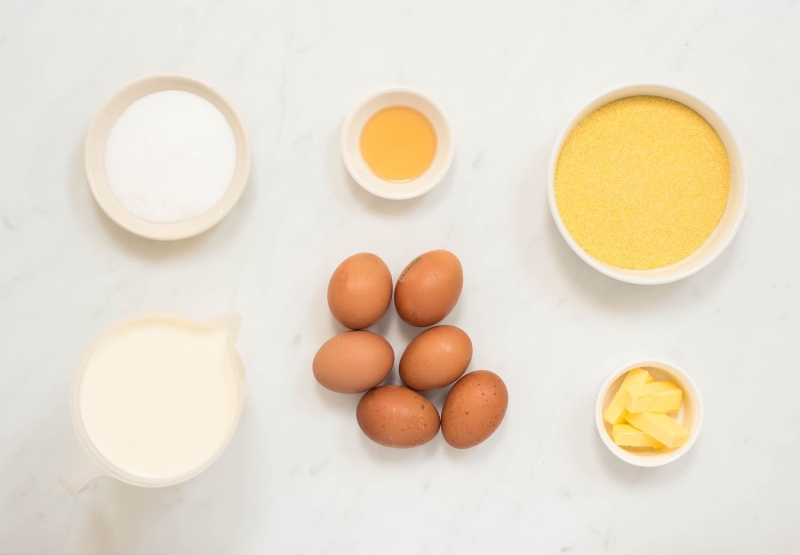
-
In a large saucepan, heat the milk over medium-high heat until just boiling.
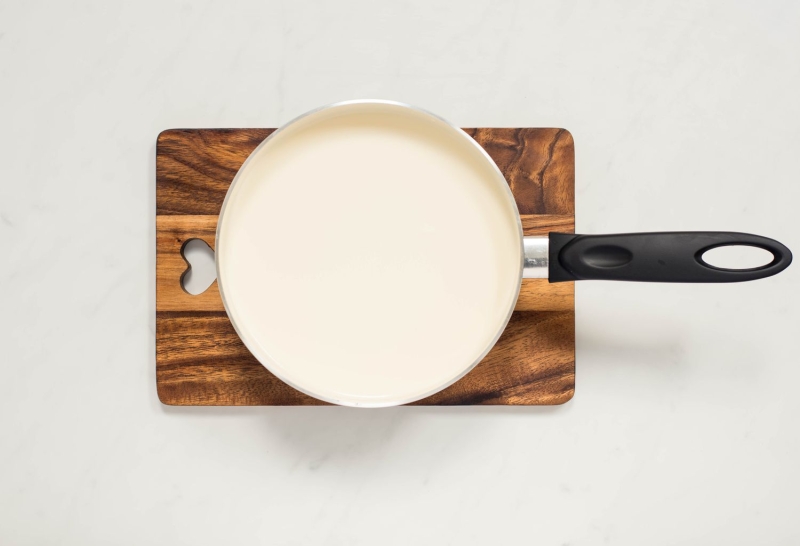
-
Add the semolina and stir with a whisk. Lower the heat to medium-low.
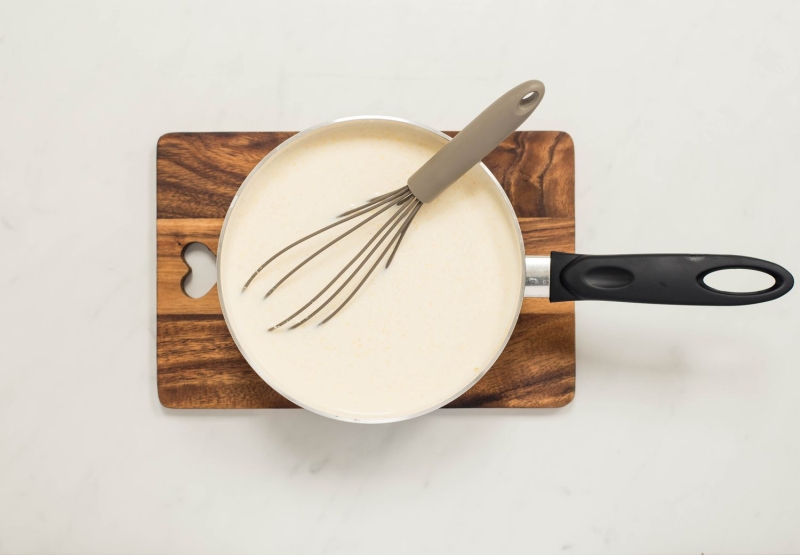
-
Using a whisk, beat the egg yolks with the sugar in a bowl.
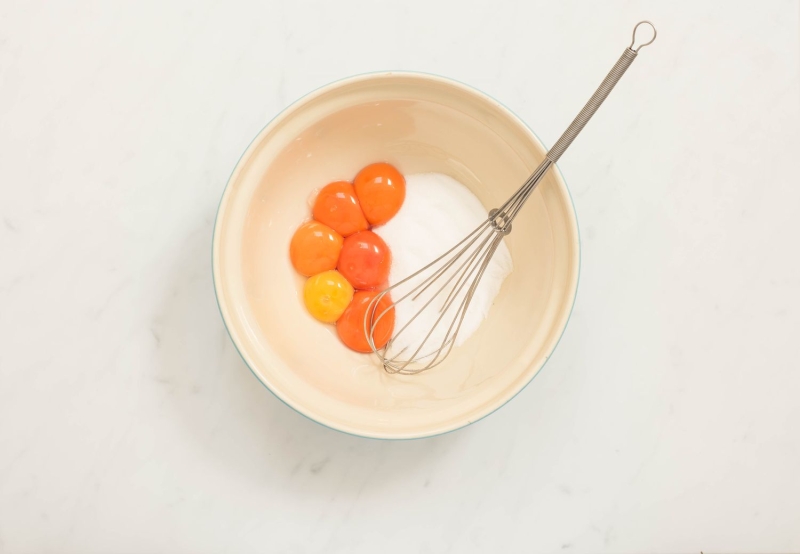
-
Ladle a cup of the warmed milk into the egg mixture to temper.
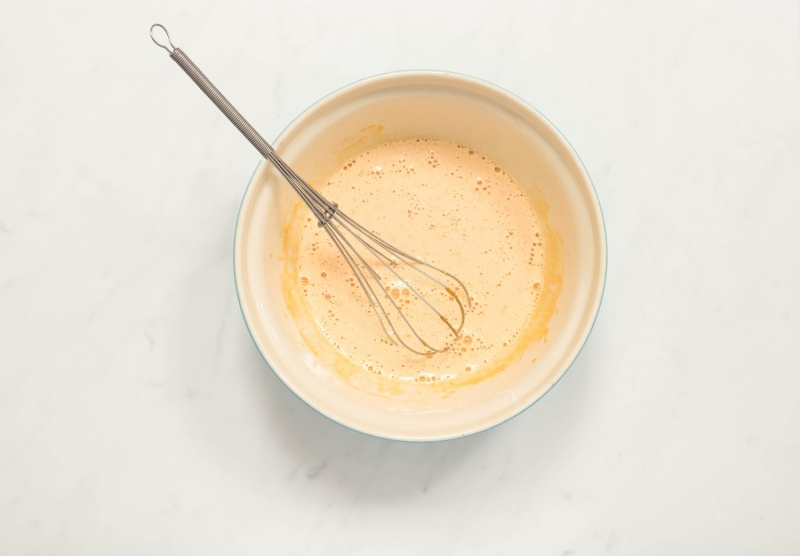
-
Then add the egg yolk mixture to the saucepan.
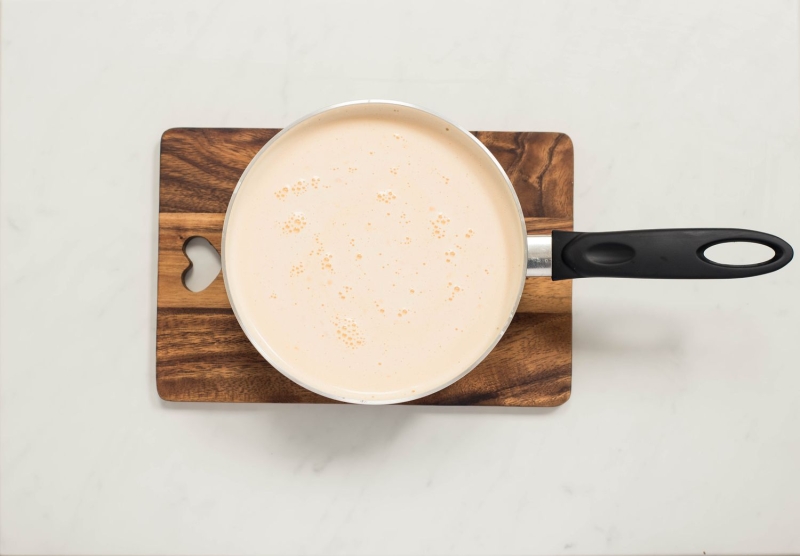
-
Continue to cook over medium-low heat until the cream starts to thicken, stirring continuously.

-
When the custard has thickened, remove from heat and stir in the vanilla extract and the butter. Set aside.
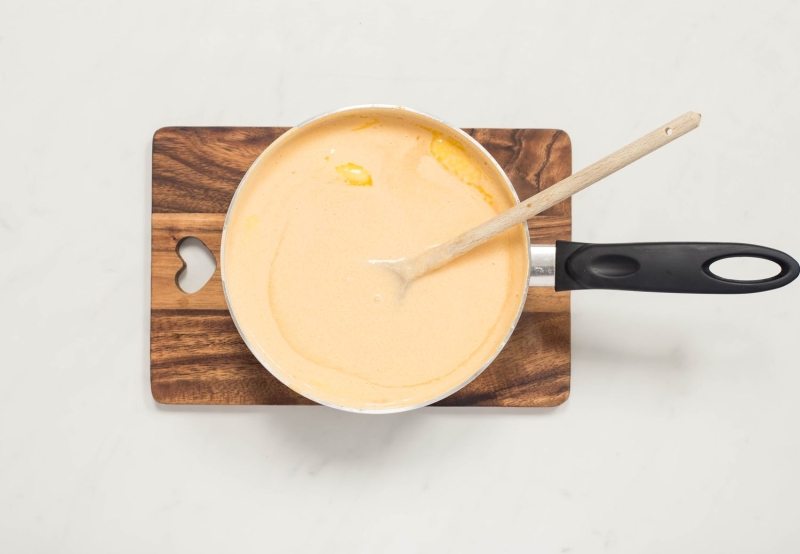
Assemble the Galaktoboureko
-
Gather the ingredients.
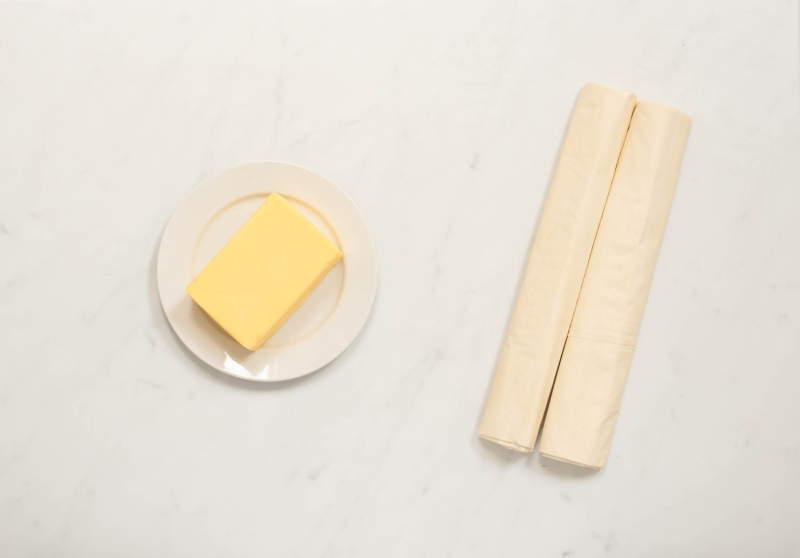
-
Carefully remove the phyllo roll from the plastic sleeve. Most packages come in 12 x 18-inch sheets when opened fully. Using a scissor or sharp knife, cut the sheets in half to make 2 stacks of 9 x 12-inch sheets. To prevent drying, cover one stack with waxed paper and a damp paper towel while working with the other.
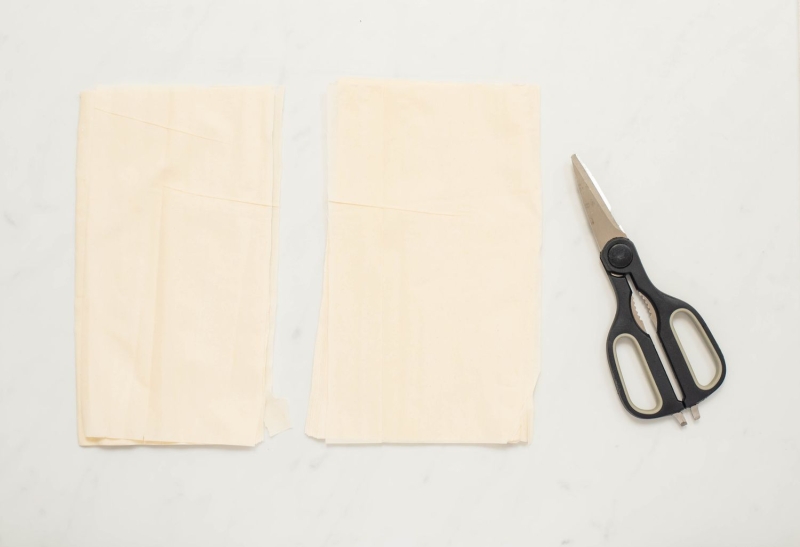
-
Preheat the oven to 350 F.
-
Using a pastry brush, brush the bottom and sides of a 9 x 12-inch rectangular pan with melted butter.
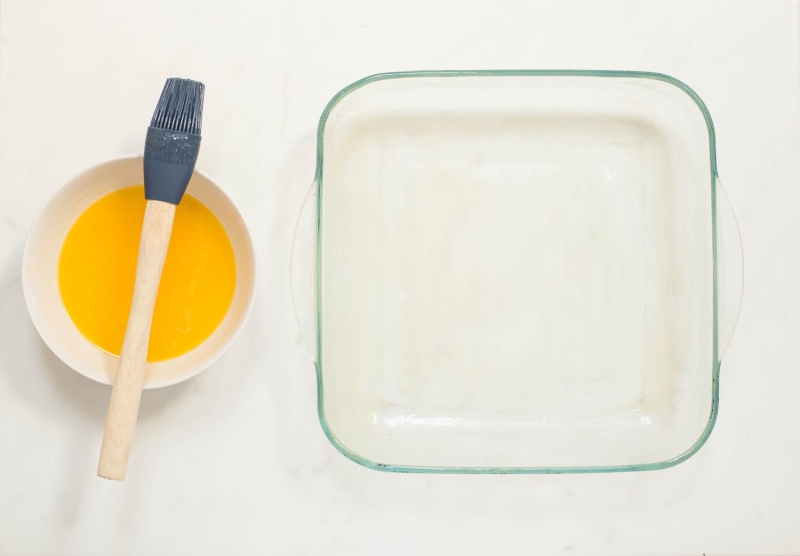
-
Begin by layering sheets one by one in the bottom of the pan, making sure to brush each one thoroughly with melted butter. You will use approximately half the phyllo sheets for the bottom of the pastry.
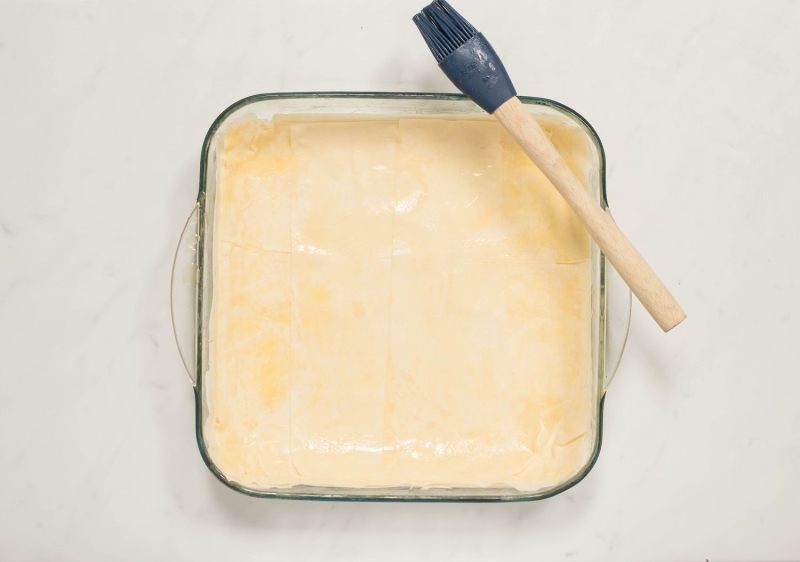
-
When you have almost layered half the sheets, drape 2 sheets of phyllo so that they extend half in the pan and half out of the pan horizontally.
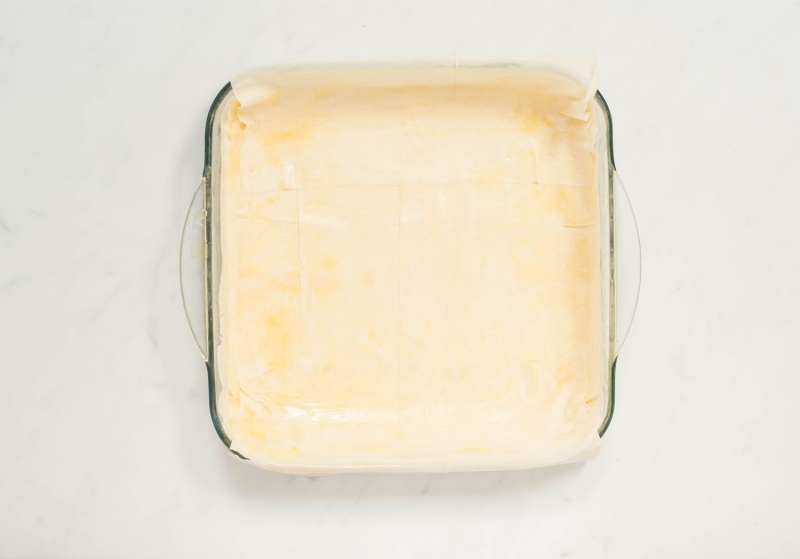
-
Add the custard in an even layer on top of the sheets, smoothing the surface with a spatula.
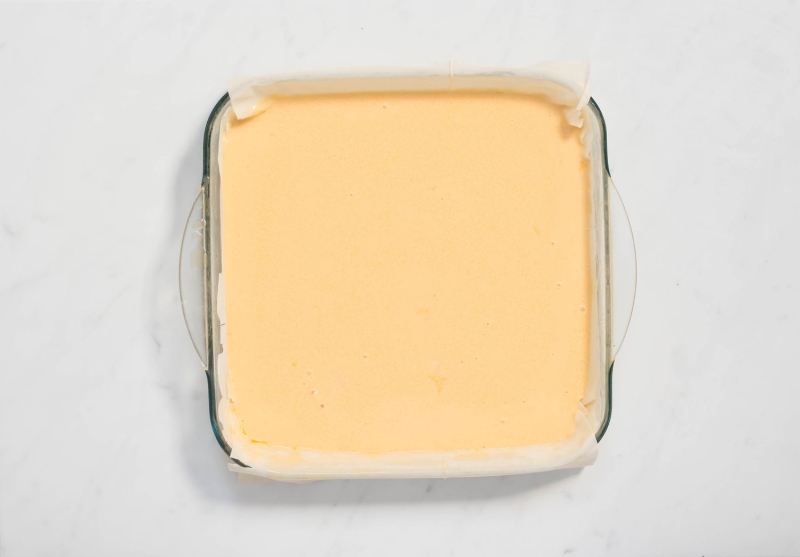
-
Fold the phyllo sheet flaps in over the custard layer.
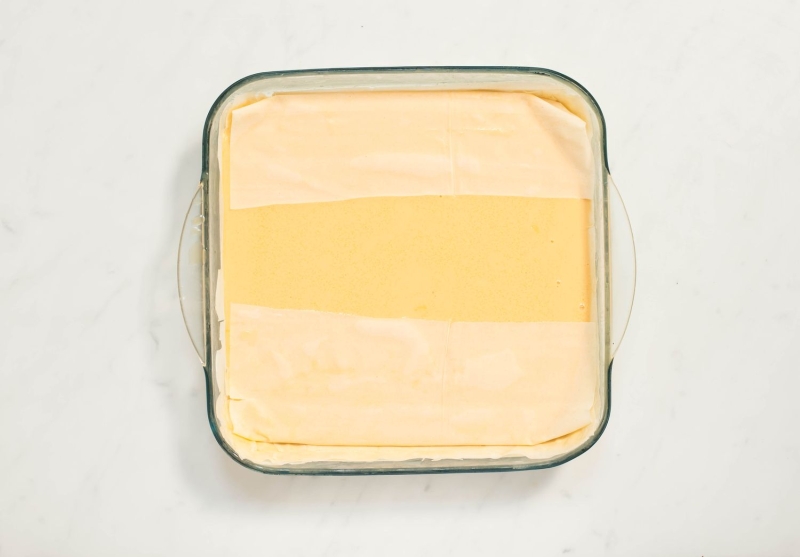
-
Then add the remaining sheets on top, brushing each sheet with melted butter.
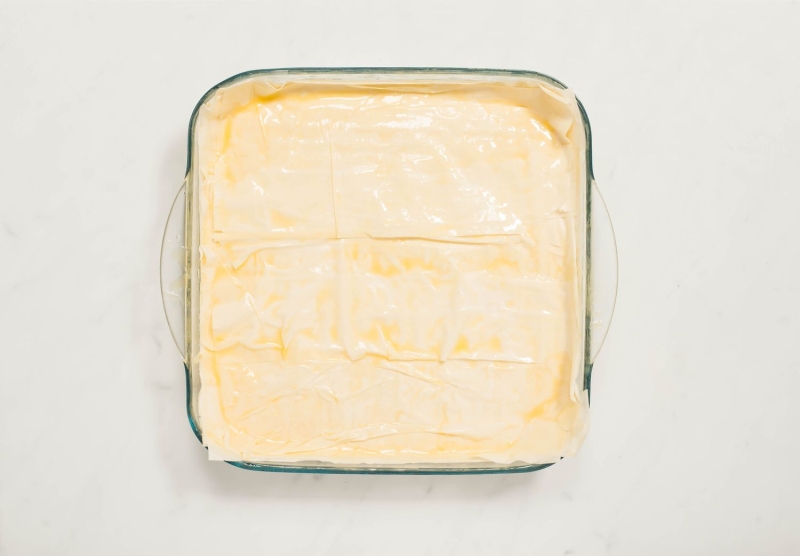
-
Before baking, score the top layer of phyllo (making sure not to puncture the filling layer) to enable easier cutting of pieces later. (You can place the pan in the freezer for about 10 to 15 minutes to harden the top layers and then use a serrated knife.)

-
Bake in a preheated oven for 45 minutes or until the phyllo turns a deep golden color.
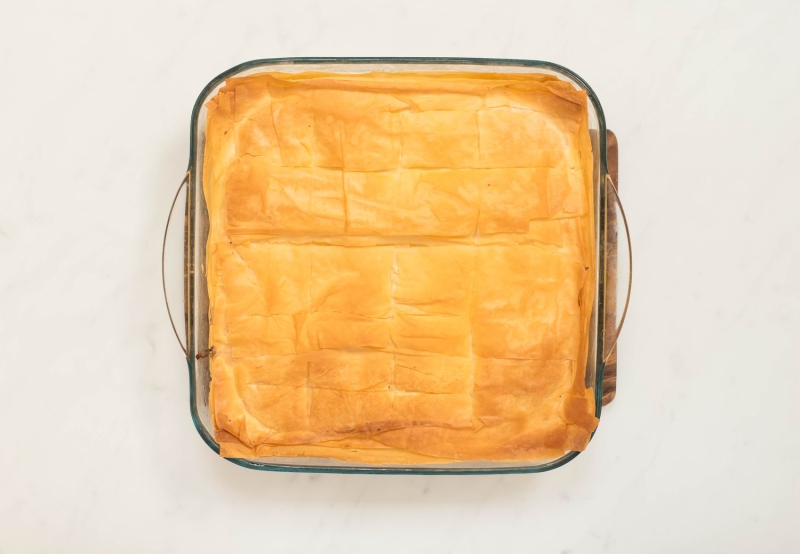
Prepare the Syrup
-
Gather the ingredients.
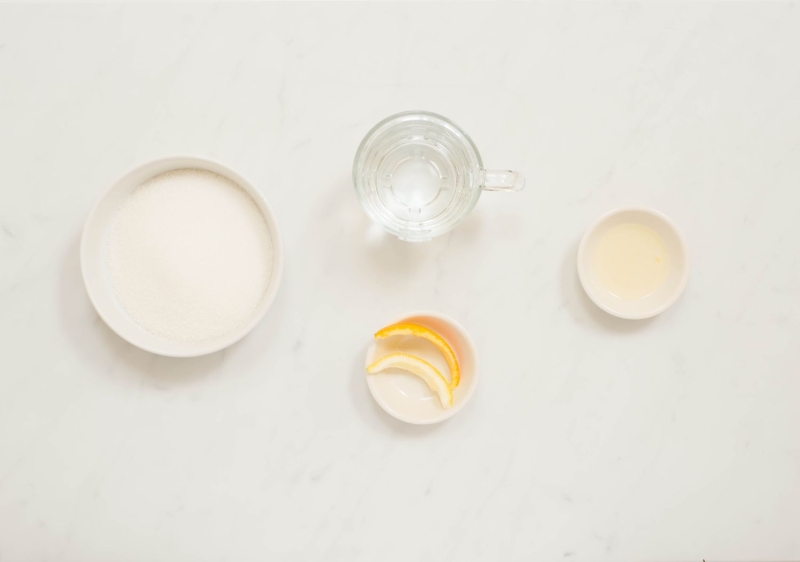
-
Combine the sugar and water in a saucepan and mix together.
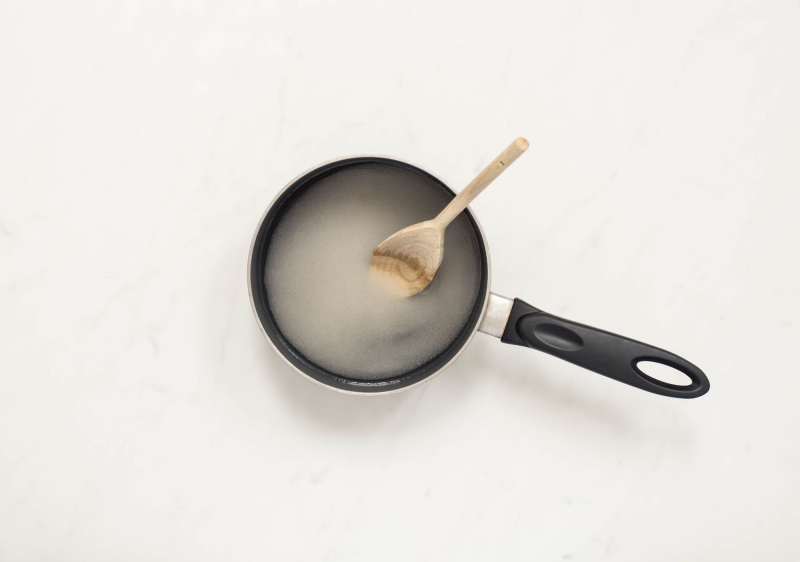
-
Add the lemon peel and orange peel and boil over medium-high heat for 10 to 15 minutes.

-
Remove the lemon and orange peel and stir in the lemon juice. Remove from heat and set aside to cool.

-
Do not pour hot syrup over the hot custard. Allow both to cool to room temperature and then carefully ladle the syrup over the galaktoboureko and allow time for it to be absorbed.
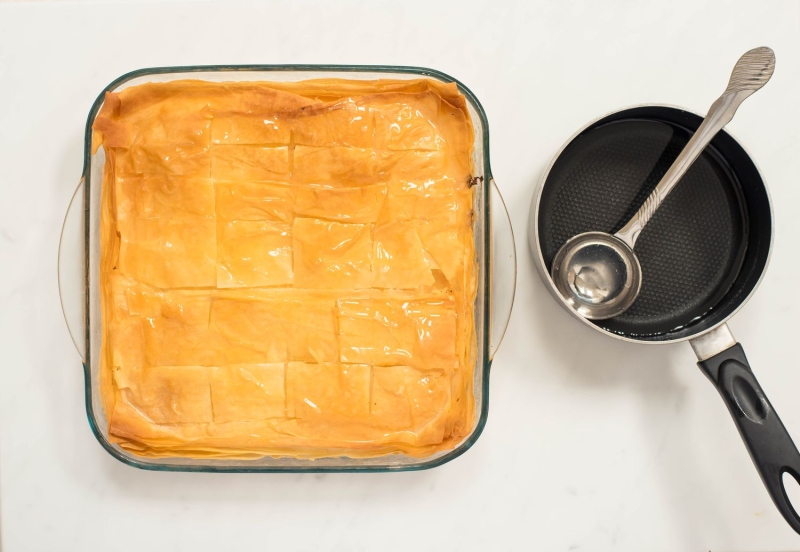
-
Once absorbed, serve and enjoy.
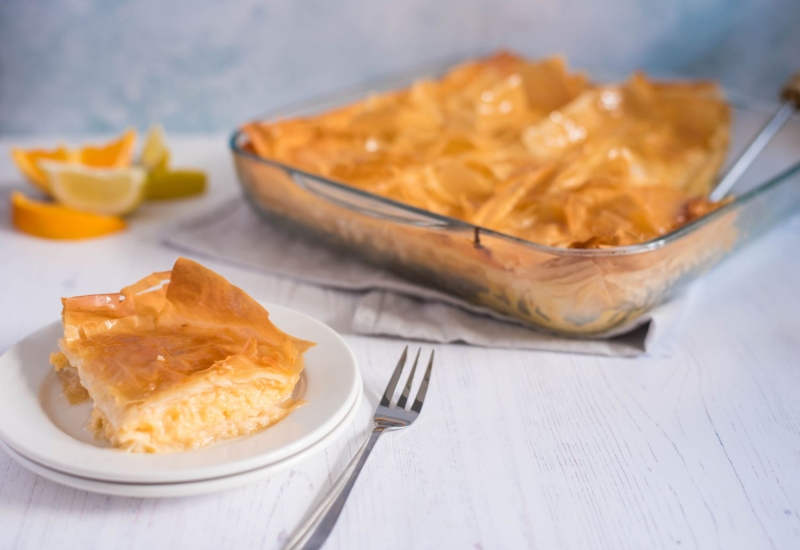
Raw Egg Warning
Consuming raw and lightly cooked eggs poses a risk of foodborne illness.
| Nutrition Facts | |
|---|---|
| Servings: 24 | |
| Amount per serving | |
| Calories | 275 |
| % Daily Value* | |
| Total Fat 13g | 16% |
| Saturated Fat 7g | 34% |
| Cholesterol 82mg | 27% |
| Sodium 141mg | 6% |
| Total Carbohydrate 35g | 13% |
| Dietary Fiber 2g | 6% |
| Total Sugars 17g | |
| Protein 7g | |
| Vitamin C 17mg | 86% |
| Calcium 96mg | 7% |
| Iron 1mg | 8% |
| Potassium 184mg | 4% |
| *The % Daily Value (DV) tells you how much a nutrient in a food serving contributes to a daily diet. 2,000 calories a day is used for general nutrition advice. | |
